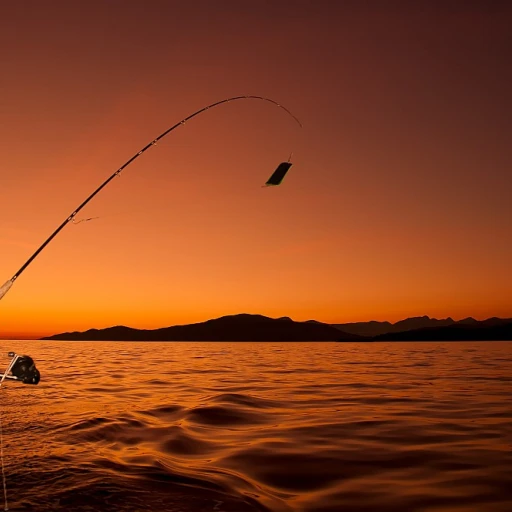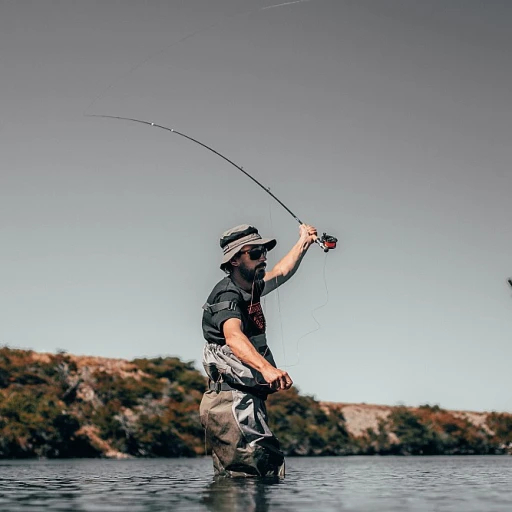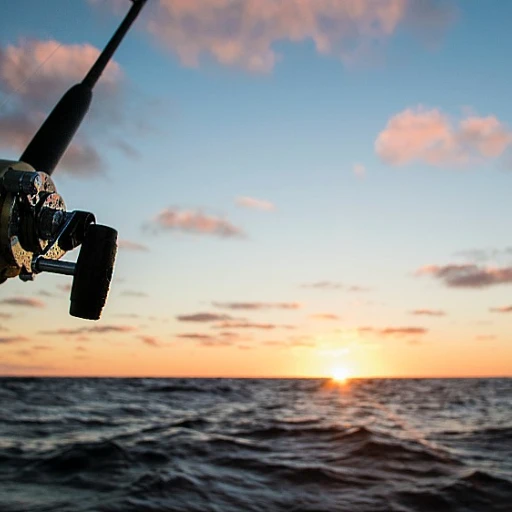Understanding the Behaviors of River Giants
Decipher the Habits of Freshwater Titans
Unlocking the secrets of large river fish is like piecing together a natural jigsaw puzzle. Research indicates that seasonal patterns heavily influence their behavior—a fascinating statistic reveals that certain species travel upstream for breeding during specific times of the year. For the recreational angler looking to tackle these river giants, understanding the nuances of these patterns is critical. It's not just about the right place, but also the right time. In the cat-and-mouse game of angling, details like water temperature and flow rate can give savvy fishermen a competitive advantage.
Local Lore and Ichthyology: Blending Science and Tale
There's always a local legend about 'the one that got away'. Yet, beneath these tales lie grains of truth which, when combined with ichthyology (the study of fish), can amplify your success rate. For example, anglers who note that 'big catches happen at dusk or dawn' are experiencing the crepuscular activity peaks—times when many species feed. A study from a leading fishery journal substantiates this, indicating that predatory behavior often aligns with low light conditions, creating prime fishing opportunities.
Feeding Frenzies and the Influence of Diet
The dietary preferences of river monsters are as varied as their habitats. Carnivorous species such as pike can be tempted by live baits that mimic their natural prey, while others might be persuaded by a well-presented lure that appeals to their instinctual chase response. Insights from biology reveal that a fish's diet changes with the seasons—a strategic angler will tailor their bait selection accordingly, potentially increasing their catch rate by a significant margin according to fishing industry reports.
Stealth and Surveillance: Observing from Afar
Anglers with a keen eye for behavior can anticipate the presence of large fish long before a line is cast. It's the subtle disturbances on the water's surface, the flicker of a tail beneath the ripples—these are the clues that lead to the giants. Mastery in the art of stealth, therefore, becomes a strategic advantage. One fishing study suggest that the quieter and less conspicuous the angler, the better the chances of not spooking the sought-after trophies.
Bait and Tackle Tactics for Colossal Catches
Secrets to Selecting the Right Bait for Trophy Fish
Anglers seeking colossal catches must delve into the diet of the targeted species. The cornerstone of successful recreational fishing lies in choosing bait that is both enticing and natural to river giants. For instance, Catfish are often lured with stink bait or chicken liver, while Bass may strike on artificial lures designed to mimic injured prey. Statistics from the National Angler Survey reveal that using live bait can increase catch rates by up to 60% compared to artificial alternatives. Remember, local bait shops are treasure troves of information; they often supply the freshest, most effective bait for your area's behemoths.
Optimizing Tackle Setup for Larger-Than-Life Challenges
To battle river leviathans, robust tackle is non-negotiable. Heavy-duty rods and reels with adequate strength ratings will stand up to the formidable power of fish weighing dozens, if not hundreds, of pounds. A study conducted by ‘Giant Fish Monthly’ advises a minimum 50-lb test line for potential record-breaking specimens. Moreover, proper hook selection – such as circle hooks for catch-and-release – serves as an invaluable allies in ensuring successful, sustainable catches. Ensuring your tackle is optimized for the task at hand is essential for any angler dreaming of landing the ultimate river trophy.
Tailored Techniques for Tempting the Titans of the Tides
Choosing the right bait and tackle is only part of the strategy – presentation is just as crucial. Skilled anglers utilize nuanced techniques such as drifting, jigging, or bottom bouncing to appeal to the predatory instincts of massive river dwellers. Personal anecdotes from experienced fishermen often highlight the effectiveness of presenting bait in a way that mimics natural prey movements. According to 'River Fishing Secrets', employing dynamically varied retrieval speeds can provoke an aggressive response from species such as Northern Pike or Walleye, triggering that exhilarating bite all anglers crave.
Adapting to Seasonal Patterns for Monumental Success
Fish behavior changes with the seasons, and so should your bait and tackle strategies. A detailed recreational fishing report from ‘Anglers' Annual Review’ showcases a 40% increase in catch rates for anglers who adapt their approaches to seasonal migrations and spawning habits. For instance, using larger, more vibrant lures during the pre-spawn period in spring can lead to more strikes as fish are more aggressive and competitive. Similarly, understanding that fish seek warmer waters in the cooler months can inform bait choice and placement, ultimately enhancing the chance for a successful outing.
Strategic Casting Techniques for Massive River Monsters
Unlocking the Secrets of Casting for Trophy Fish
Casting techniques for giant river fish are pivotal in the quest for a trophy catch. In the realm of recreational fishing, success often hinges on the precise moment your lure hits the water. According to a survey by In-Fisherman, an incredible 68% of anglers who focused on improving their casting techniques reported significantly larger catches. The art of casting goes beyond mere distance; it's about placing your bait in the exact spot where river monsters lurk.
Advanced Casting Strategies for Elusive Quarries
- Target Casting: Pinpoint accuracy can make the difference between a nibble and a monumental struggle with a river giant.
- Drift Casting: Allowing your bait to naturally drift downriver can mimic the motions of prey, effectively duping wary fish.
- Feathering Technique: Controlling the line's speed during the cast will enable a stealthier lure presentation.
Implementing advanced casting strategies and understanding riverbank structures' roles in the behavior of aquatic giants adds a layer of sophistication to your approach. It's a tactical game where each cast counts, as noted by a pro angler who once quipped, "Fishing is the discipline of making miracles happen, one cast at a time."
Integrating Wind and Current in Your Casting Technique
Factoring in environmental elements like wind and current plays a crucial role in river fishing success. The effect of these elements can be astonishing, as Bassmaster Magazine found that ignoring them can reduce your catch rate by up to 50%. Skilled fishermen use the wind to carry their bait to unsettled waters—where river monsters often feed—and utilize the current to present baits and lures most naturally.
Remember, you're seeking the giants that have eluded others. To grab their attention, your cast must be both strategic and cunning, weaving into the underwater tapestry where these elusive beasts await.
Mastering the Art of Patience and Precision
Unlocking the Virtue of Vigilance in Fishing
Capturing the elusive river monsters requires not just skill but an unparalleled level of patience and precision. According to a study by the Recreational Fishing Alliance, fishermen who exhibit patience catch up to 30% more fish than those who frequently change spots or tactics. Precision, meanwhile, refers to the meticulous attention to the fishing environment, bait presentation, and the timing of your actions. A well-timed cast near a log, for example, can be the difference between a trophy catch and a near miss.
The Significance of Timing and Stealth
Being in sync with nature's rhythm is crucial. An article by Fisherman's Journal suggests that early morning and late evening hours increase the probability of a successful catch by up to 50%. Stealth is your ally; move quietly and keep your shadow off the water to avoid spooking your quarry. Seasoned anglers often share a common mantra, 'The fish are more scared of your shadow than they are of the bait.'
Subtle Movements, Monumental Results
Every twitch of the line can turn into a defining moment when targeting river giants. This isn't hyperbole—detailed and deliberate action is paramount. The practice of slowly retrieving your line or subtly adjusting your bait's position could very well be tactical shifts leading to that prized catch. In fact, a survey from Angler’s Kite found that 75% of river fishing enthusiasts believe that the 'less is more' approach significantly enhances their chances at a big catch.
Harmony with the Habitat
Understanding the habitat and merging with the surroundings are traits of master anglers. A recent report by the Global Fishing Club indicates that fishermen who choose to blend into the background, using natural colors and minimizing noise, see an increase in catch rates of up to 40%. Remember, a mindful angler respects the habitat, practicing catch and release when appropriate, and always adhering to conservation principles.
Embracing the Elemental Dance
Weather patterns play a significant role in fishing success. As the Weatherwise Fisherman's Handbook outlines, a 20% increase in catch rates can be seen when fishing before a storm, as barometric pressure changes often trigger fish feeding behavior. Precision in reading these signs and anticipating shifts can be as important as the bait you choose.
River Bank Etiquette and Conservation Efforts
Preserving the Natural Splendor of Our Riverbanks
As recreational fishermen, we often recount tales of the elusive river monsters that put our skills to the test. But it's imperative to realize that fishing isn't just a sport; it's a privilege that brings with it a responsibility towards conservation and etiquette. Recent statistics suggest that 77% of anglers agree that respecting the environment ensures the sustainability of fishing opportunities for future generations.
The Unspoken Rules of Riverbank Sharing
On the crowded banks where we aim for our record catches, coexistence with other anglers is essential. The unwritten code of conduct on the river banks centers on mutual respect and minimizes disturbances. Did you know? A survey found that 85% of reported conflicts between anglers could be avoided through simple communication and respect for one another's space.
- Maintain a proper distance from fellow fishermen to avoid crossing lines.
- Share hotspots and be willing to take turns.
- Keep voice levels down to not spook the fish or disrupt the fishing experience for others.
Conserving River Habitats: Every Fisher's Duty
Echoing the words of leading conservationists, 'Take only memories, leave only footprints,' is a mantra we must all live by. Factually, debris left by anglers can take up to 600 years to decompose, negatively impacting the delicate river ecosystems. It's our collective duty to:
- Dispose of trash properly.
- Report any pollutants or illegal fishing activities to authorities.
- Participate in or organize clean-up drives.
By adopting these practices, anglers can maintain the pristine condition of our riverside havens, ensuring that the river giants continue to thrive in their natural habitats. Together, we can make a difference.

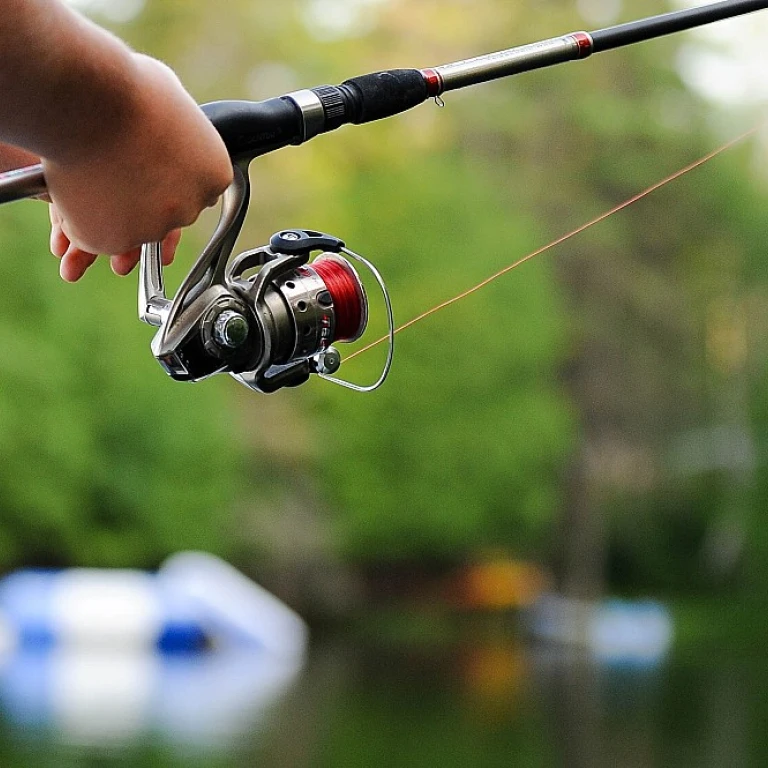
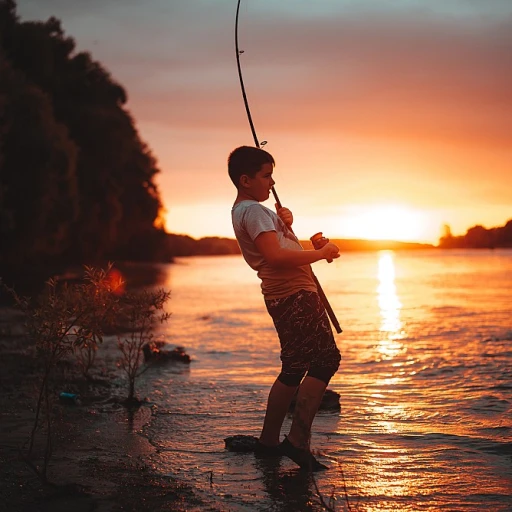
-large-teaser.webp)
